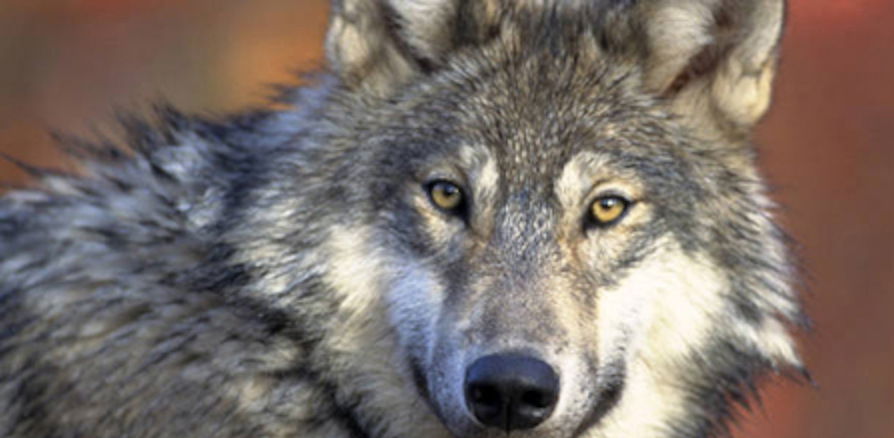ODFW expands Baker County lethal wolf removals due to pack’s continued livestock killings

BAKER CITY, Ore. (KTVZ) -- The Oregon Department of Fish and Wildlife said Thursday it is increasing lethal removal efforts on the Lookout Mountain wolf pack due to continued depredations and evidence the pack is now focusing on livestock, not natural prey.
The decision comes after nine livestock depredations in two months — despite extensive non-lethal measures in place since early spring, and the lethal removal of two wolves from the pack in early August. The most recent depredation was confirmed during an investigation on Monday, a six-month-old calf killed in a large forested pasture on private land.
The Lookout Mountain wolf pack has continued to depredate and presents a significant risk to livestock in the area—a risk that will continue as livestock will be present in the pack’s AKWA (area of known wolf activity, e.g. range) all winter. September and October also tend to have higher depredation rates historically on cattle in large rangeland pastures.
Due to this situation, ODFW said it is issuing limited-duration kill permits to four impacted livestock producers that allow them to take two uncollared wolves from the ground on land they own or legally occupy from now until Oct. 31.
ODFW also said it intends to lethally remove another four wolves, aerially or from the ground, including the VHF-collared breeding male. ODFW does not plan to target the GPS-collared breeding female.
Wolves have been present in this area for two years, with little direct conflict, the agency said. Challenges started in February, when wolves started visiting livestock calving pastures. Producers in the area increased night checks, installed fladry, and hazed wolves from near their calving and winter pastures but depredations began in mid-July and have continued.
Five of those depredations have occurred since ODFW first authorized lethal control on July 29 and removed two 3.5-month-old wolves on Aug. 1. Hazing, human presence and lethal removal activities have been effective at moving wolves around the AKWA, but depredations unfortunately continued, ODFW said.
The pack currently numbers up to nine wolves. Both Lookout Mountain collared adult breeders and five juveniles (now about 50 pounds) have been documented by ODFW as recently as Sept. 8. One or two yearlings are likely still present in the AKWA, although they have not been observed since Sept. 1.
Non-lethal measures in place before the depredations started in mid-July have continued. Producers have further increased their presence on the landscape; moved cows to pastures where they believed livestock were less vulnerable based on wolf location information provided by ODFW; hazed wolves out of their herds with firearms; and concentrated livestock in smaller pastures. One producer sold a large group of yearling cattle earlier than planned to reduce risk of additional depredation to those animals.
Since July 29, affected producers have had a lethal control permit allowing them to take up to four uncollared wolves. ODFW initially structured the incremental lethal control to not target collared breeding adults. This was an effort to keep the pack intact and enable the adults to continue to feed remaining juveniles (removing breeding adults is more likely to break up a pack).
It has proven difficult to take wolves from the ground, rather than by helicopter, the agency said. After failed ground attempts, ODFW removed the two 3.5-month old juveniles from the pack from a helicopter during a flight on Aug. 1 (the yearlings were not observed during the flight or they would have been removed first). Producers have repeatedly shot at wolves chasing their livestock (allowed under Oregon’s “caught in the act” statute) but missed.
ODFW staff have spent over 120 hours on the ground in the Lookout Mt. AWKA since July 30 to remove the yearlings and supplement human presence efforts to move wolves away from livestock. Livestock producers have spent hundreds more hours.
There is no evidence that the wolves are being attracted to pastures or other areas with livestock due to bone piles, carcasses or other circumstances. Livestock producers continue to watch for and remove any attractants, and ODFW has not identified any conditions that attract wolves and fosters conflict during its repeated investigations of depredation incidents.
There is evidence that the Lookout Mt. pack is focused on livestock, even though deer and elk are common and often seen in the same areas where depredations are occurring. Wolves’ preferred prey, elk, are abundant in this unit and currently well over their population management objective.
The wolves have been observed chasing cows during the day multiple times. While monitoring wolf locations and habitat use, multiple clusters of GPS locations (indicating time spent feeding at a location) have been identified and visited either by livestock producers or ODFW staff. Only dead livestock have been located at the clusters, no natural prey have been found. (The breeding female’s GPS collar provides her location up to eight times per day.)
“This pack has made a shift in their behavior,” says Roblyn Brown, ODFW Wolf Coordinator. “Instead of the occasional opportunistic killing of a vulnerable calf, now they are targeting livestock despite the high numbers of elk and deer in the area where the depredations have occurred and extensive human presence to haze wolves.”
“Previously we avoided removing an adult to keep the pack intact and give the breeding adults a chance to raise the remaining juveniles and to change their depredation behavior,” continued Brown. “We know it’s hard for some to accept any killing of wolves, let alone the juveniles, but we structured it this way to try keep the pack intact. Unfortunately, this did not have the desired effect, and we are now out of options for this pack to stop depredating on livestock.”
By targeting the breeding male, ODFW hopes to still allow the breeding female to raise any remaining juveniles. Reducing the number of juveniles she will need to feed increases the likelihood that some will survive.
Brown thanked livestock producers for all their work to try to avoid depredation and recognized the impact it has had on their lives. “While nine depredations in relationship to the large number of cattle raised in Oregon might seem like not that big of a deal, this situation has had a huge impact on the individual producers affected,” she said. “Local producers have worked so hard to protect their calves for months now, going above and beyond what they were required to do under Oregon’s Wolf Plan at great personal cost in time, energy, fuel, and other expenses. “
Many things, including other ranch duties, have fallen to the wayside while they have focused on human presence up on the mountain, so we want to express our appreciation for their hard work during this very difficult situation,” she added.



